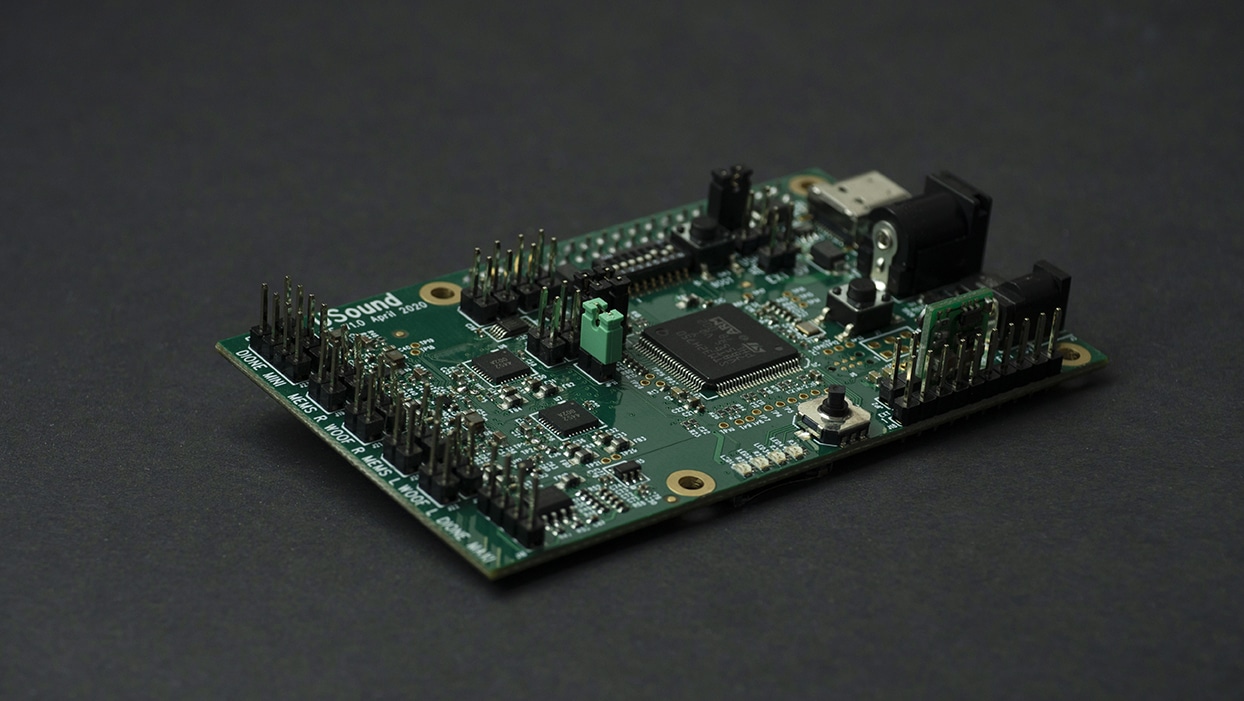
Published:
Rapid prototyping with MEMS speakers
To speed up the process of bringing your concept of a MEMS speaker-based audio system to reality, we designed two development platforms: Amalthea UA-R3010 and Helike UA-E3010. This article will walk you through the essentials of rapid prototyping with MEMS speakers and provide an overview of the expansion kits available.
If your goal is to test our MEMS speakers to identify if they meet your target specifications, for example, for a tweeter in a 2-way system, we recommend starting with the linear amplifier Amalthea UA-R3010. Its frequency range goes up to 80 kHz, and it can drive up to 40 Adap MEMS at once. Amalthea UA-R3010 can be used with the expansion kit Carme UJ-R1020, a box designed to hold one MEMS speaker and, for example, perform free-field measurements. To gain more insights into the process of measuring our MEMS speakers from the Ganymede series using the Carme UJ-R1020 speaker box, you can check out this article.
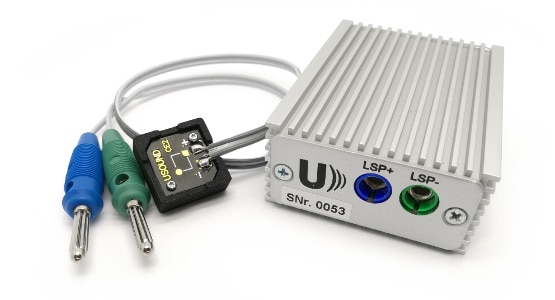
Otherwise, if you’re interested in testing MEMS loudspeakers more in-depth and integrating them into one or two-way systems, we also designed a versatile development board to get started with rapid prototyping, which we call Helike UA-E3010.
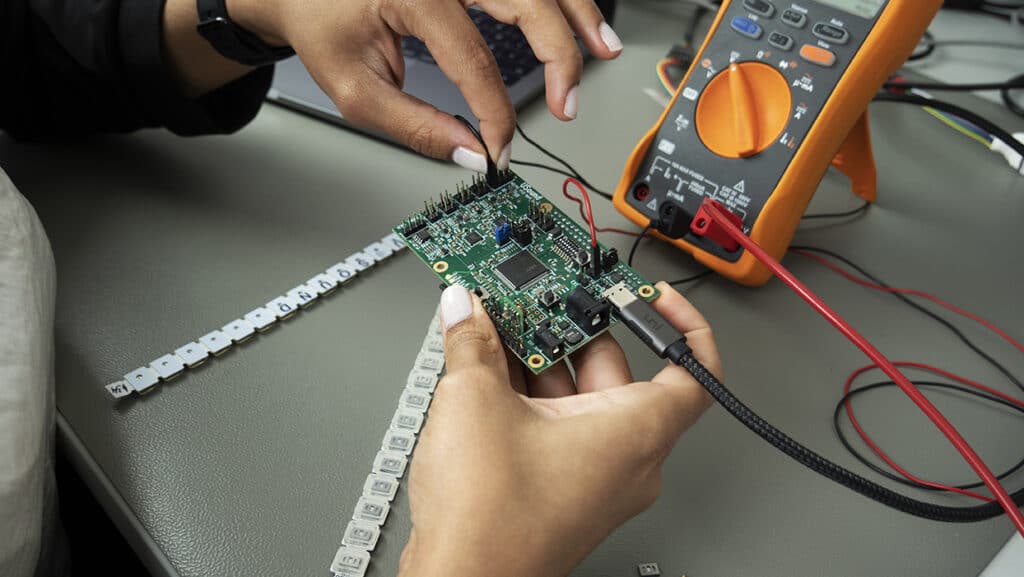
This development board can be used either standalone, as a USB audio device (UAC 2.0), or as an extension board to a Raspberry Pi platform with a 40-pin GPIO interface. In standalone mode, an SD card or USB connection can be used as input, whereas in slave mode, the STM32 processor receives both I2S clock and audio data from a device such as Raspberry Pi. Several supply options are available and different amplifiers are integrated, making it possible to connect a wide range of our products and expansion kits, including:
- 2 Danube UAM-P2050 audio modules
- 1 Dione Maxi UY-R3020 speaker array
- Up to 2 USound MEMS loudspeakers
- Up to 2 ED loudspeakers
- Carme UJ-R1020 box
In the near future, the Helike UA-E3010 will also be compatible with our 2nd generation of MEMS speakers, Conamara.
The Helike UA-E3010 is a very versatile platform to get started with MEMS speaker technology. It not only makes it more accessible to do rapid prototyping of our MEMS speakers but also includes filtering and DRC (Dynamic Range Compression) functionalities. With these, it is possible to develop filters that can be applied to the different outputs as well as crossover filters for 2-way applications. The filter development can be done with a simple text editor, so there is no need for external software. The necessary firmware and filter configuration files are available via GitHub.
One example of an application for the Helike UA-E3010 board is to design and test an audio module for audio glasses or AR/VR glasses. We gathered our experience during the FAUNA audio glasses development and created an expansion kit, which we call Danube UAM-P2050. Danube UAM-P2050 is an audio module that provides the best-in-class ratio between audio performance and the required mechanical volume to enhance glasses with a 2-way audio system, by combining a MEMS tweeter and an ED woofer. With the Helike UA-E3010 board, it is possible to connect and drive two Danube UAM-P2050 audio modules simultaneously, facilitating the development of customized solutions. Below you can see an example of the setup of the Helike UA-E3010 and the Danube
UAM-P2050.
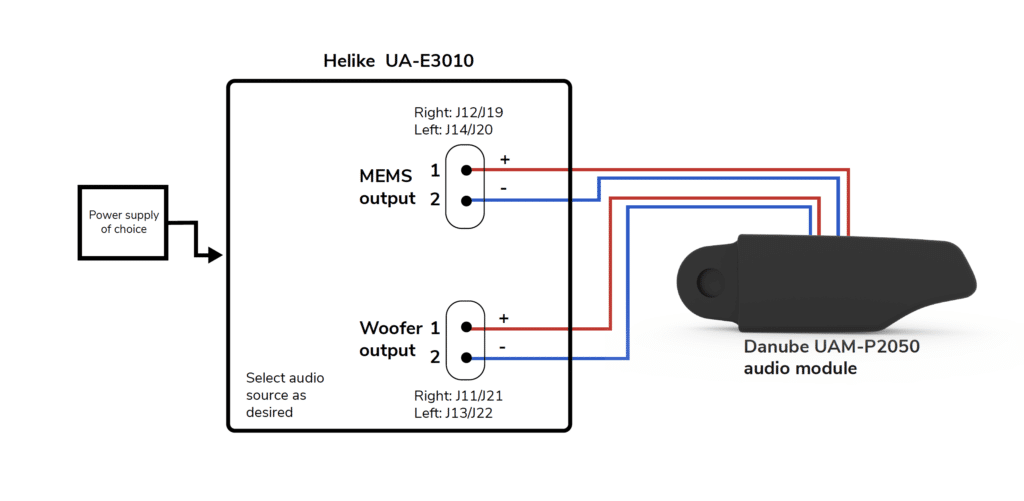
UAM-P2050.
Another expansion kit of the Helike UA-E3010 is the Dione Maxi UY-R3020 speaker array. It consists of a flexible PCB on which several Adap UT-P2019 loudspeakers are mounted. With this product, we transferred the concept of LED stripes to acoustics and designed a so-called sound stripe.

Due to their flexible structure and protective construction, speaker arrays are ideal for applications where an audio solution needs to be added on top of an existing design. In fact, Dione Maxi UY-R3020 enables unique designs: for example, you can mount the array on a lamp or any household device without compromising its aesthetics. It can also be integrated into your existing loudspeaker design and be used as a tweeter. As a proof of concept, we designed a loudspeaker consisting of a ⌀ 6.35 cm ED woofer and three sound stripes containing 20 MEMS speakers each, producing a homogenous, clear sound field around the speaker.
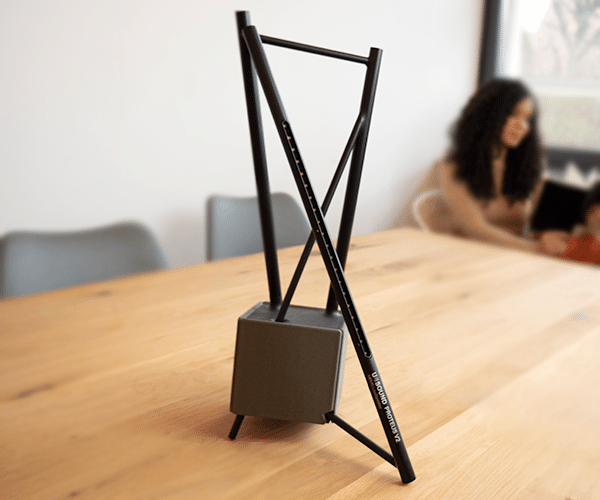
As mentioned above, we offer a wide range of products, from MEMS loudspeakers to development boards and evaluation kits for both audio enthusiasts and companies that want to develop customized audio solutions. Our team of audio experts is also available to provide support on the development and help finalize the product design. If you want to get started, all products mentioned in this article are available on Digi-Key and our other distributors.
Get started.
Contact us and discover how MEMS speakers can take your audio system design to the next level.
Contact us >
This article was originally written by Marco Rinaldi, a former team member, and has been updated by our editorial team on 4.04.2025 to reflect current best practices.

